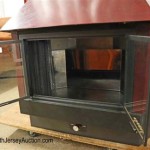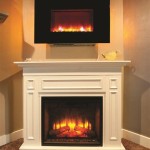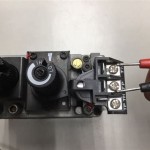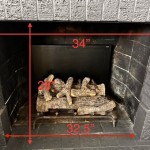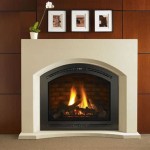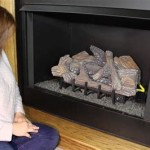Fireplace Ventilation Wall: A Comprehensive Overview
Fireplace ventilation is a critical aspect of home heating systems that ensures proper air circulation, efficient combustion, and the safe removal of harmful byproducts. While traditional fireplaces often rely on a chimney for ventilation, innovative designs incorporate ventilation walls to enhance performance and address specific architectural and environmental considerations. This article explores the concept of fireplace ventilation walls, detailing their functionality, advantages, design considerations, and installation practices.
A fireplace ventilation wall, in essence, is a strategically designed structure that integrates ventilation components directly into the fireplace surround or adjacent wall space. The primary goal is to manage airflow to and from the fireplace, optimizing the combustion process and preventing the buildup of potentially dangerous gases like carbon monoxide. This approach can be particularly beneficial in situations where a traditional chimney is not feasible or desirable, or where enhanced ventilation is needed to improve fireplace efficiency.
Understanding the Functionality of a Fireplace Ventilation Wall
The core function of a fireplace ventilation wall centers around controlling the movement of air. This control is exercised at two crucial stages: the intake of fresh air to fuel the fire and the exhaust of combustion byproducts. Traditional fireplaces usually rely on the natural draft created by a chimney to draw air in at the bottom and expel smoke and gases through the top. However, this natural draft can be affected by various factors, including weather conditions, building design, and the presence of other appliances that also utilize the chimney flue.
A ventilation wall can regulate airflow by incorporating specific design elements. These include meticulously placed air inlets that draw in fresh air from the outside or from a designated room. The air is then channeled to the firebox in a controlled manner, ensuring a consistent and sufficient oxygen supply for complete combustion. This can reduce the amount of smoke produced and improve the overall efficiency of the fireplace.
On the exhaust side, the ventilation wall incorporates a system to direct the combustion gases to the outside. This system may involve a direct-vent setup, where a sealed combustion chamber is connected to an external vent pipe that runs horizontally through the wall and expels the gases directly outdoors. Alternatively, a vent pipe can be routed through the wall and connected to a chimney or vertical vent system. The key is to ensure that the exhaust gases are safely and efficiently removed from the living space.
The effectiveness of a fireplace ventilation wall depends on several factors, including the size and design of the firebox, the size and placement of the air inlets and outlets, and the overall design of the ventilation system. A well-designed system will minimize smoke spillage into the room, improve combustion efficiency, and reduce the risk of carbon monoxide poisoning.
Advantages of Integrating a Fireplace Ventilation Wall
Compared to traditional chimney-based ventilation systems, fireplace ventilation walls offer several advantages. One key benefit is the increased flexibility in fireplace placement. Without the need for a direct vertical chimney, the fireplace can be located in areas where a traditional chimney would be difficult or impossible to install. This opens up possibilities for innovative architectural designs and allows for more creative use of space within the home.
Another advantage is improved energy efficiency. A well-designed ventilation wall can minimize heat loss through the ventilation system. Traditional chimneys can act as thermal chimneys, drawing warm air out of the house even when the fireplace is not in use. Ventilation walls, especially those incorporating direct-vent technology, can be sealed off when the fireplace is not in operation, preventing heat loss and improving the overall energy efficiency of the home. This can lead to lower energy bills and a more comfortable living environment.
Furthermore, fireplace ventilation walls can often enhance the aesthetic appeal of the fireplace. The ventilation components can be integrated seamlessly into the surrounding wall, creating a clean and modern look. The absence of a bulky chimney can also provide a more open and spacious feel to the room. The design options are virtually limitless, allowing homeowners to create a fireplace that perfectly complements the overall décor of their home.
Safety is another significant consideration. Properly designed and installed ventilation walls can significantly reduce the risk of carbon monoxide poisoning. By ensuring complete combustion and efficient removal of exhaust gases, these systems minimize the buildup of harmful gases within the living space. This is particularly important in airtight homes, where insufficient ventilation can exacerbate the risk of carbon monoxide exposure.
Design and Installation Considerations for Fireplace Ventilation Walls
Designing and installing a fireplace ventilation wall requires careful planning and attention to detail. Several factors must be considered to ensure optimal performance, safety, and aesthetics. One of the most important considerations is the sizing and placement of the air inlets and outlets. These must be carefully calculated to provide adequate airflow for combustion and efficient exhaust of gases. Local building codes and regulations often dictate specific requirements for ventilation systems, and these must be strictly adhered to.
The choice of materials is also crucial. The ventilation components must be made of durable, heat-resistant materials that can withstand the high temperatures associated with fireplace operation. The materials used for the surrounding wall must also be fire-resistant and compliant with building codes. Proper insulation is essential to prevent heat loss and to protect the surrounding wall structure from excessive heat exposure.
The installation process should be carried out by qualified professionals who have experience in fireplace installation and ventilation systems. Proper installation is critical to ensure the safety and efficiency of the system. This includes ensuring that all connections are airtight, that the ventilation components are properly aligned, and that the system is tested for proper operation before being put into use.
Furthermore, regular maintenance is essential to keep the ventilation system functioning properly. This includes cleaning the air inlets and outlets to remove any obstructions, inspecting the vent pipes for damage or corrosion, and ensuring that the seals are intact. Regular maintenance can help prevent problems and extend the lifespan of the ventilation system.
The integration of a fireplace ventilation wall is not a simple DIY project; it requires expertise in building codes, ventilation principles, and fire safety. Engaging a qualified professional ensures the system is designed and installed correctly, promoting the safety and longevity of the fireplace and ventilation system.
The selection of the fireplace itself is also important. Direct-vent fireplaces are often the preferred choice for ventilation wall applications, as they are designed to be sealed and to exhaust gases directly to the outside. These fireplaces offer enhanced safety and efficiency compared to traditional open-hearth fireplaces. However, other types of fireplaces can also be used with ventilation walls, provided that the ventilation system is properly designed and installed to accommodate the specific requirements of the fireplace.
Finally, integrating the ventilation wall into the overall design of the home is crucial. The ventilation components should be concealed or integrated seamlessly into the surrounding wall to create a visually appealing and cohesive design. The choice of materials, colors, and finishes should complement the existing décor of the room. A well-designed fireplace ventilation wall can be a beautiful and functional addition to any home.
Gas Fireplace Venting Explained Heat Glo

Wall Mounted Gas Fireplace Vent Inspecting Hvac Systems Internachi Forum

Icc Direct Vent Gas Venting Insulated Wall Thimble

Fireplace Wall Vent General Q A Chieftalk Forum

What Are The Best Ways To Vent A Gas Fireplace Zoroast

Guide To Direct Vent Gas Fireplaces

How To Find The Most Efficient Direct Vent Gas Fireplace For Your Next Project

How Direct Vent Fireplaces Work

Power Vent Flare Fireplaces

Clihome 30 In Classic Built Or Wall Mounted Direct Vent Electric Fireplace Insert Cbl 30bk The Home Depot

